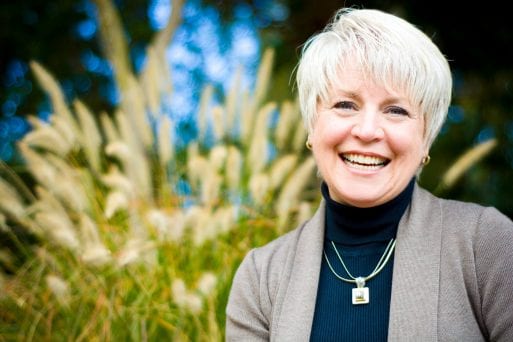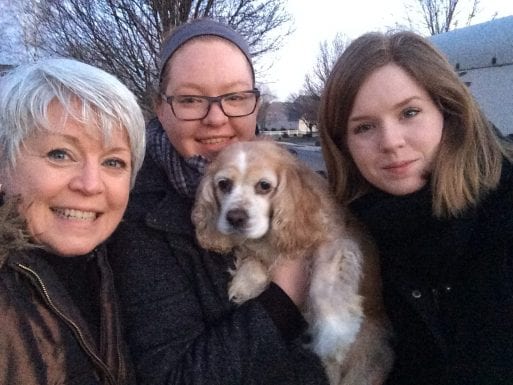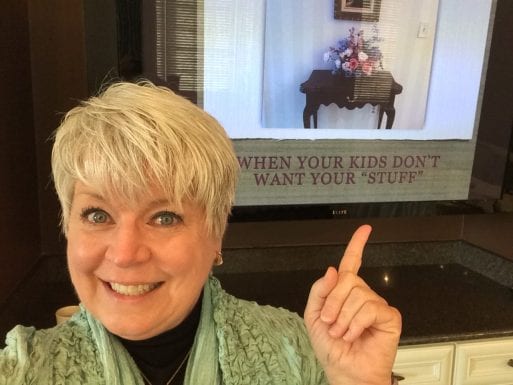
Today, SevenPonds concludes its two-part interview with Jill Kearney, founder and CEO of Senior Moves By Design in Allentown, Pennsylvania. Since founding the company in 2009, Jill has assisted more than 800 senior clients to make “joyful transitions.” She enjoys traveling, spending time with her two daughters, her mother and her dogs, and advocating for elephants. Jill, who’s serving her second term on the board of the National Association of Senior Move Managers (NASMM), is also writing her first book.
Editor’s note: This interview has been edited for length and clarity.
Rachel Jones: Welcome back, Jill. Last week, you mentioned that some senior moves are prompted by the loss of a spouse. Other people are moving into senior living facilities against their will. How do you help people through transitions they don’t want?
Jill Kearney: Everyone gets a free one-hour consultation in their homes, and that gives us a chance to find out their reason for moving. It also lets them decide if they like us. What we do is massively invasive — we see cupboards and drawers that their kids may never see — so trust is vitally important. Most often the client is moving themselves — even when they’re in their 80s or 90s — and they’ll tell us, “It’s a beautiful place but I don’t really want to go.” That’s when I’ll say, “Let’s just sit down and talk. Tell me what’s going on.” And they’ll say, “Well, I lost my husband six months ago.” Often, they’ve found that alone, they can’t carry the groceries up the stairs. Or they can’t drive the car. The yard is too big. All of a sudden, they’re not only grieving their spouse, but they’re also grieving the loss of a lifestyle. So we’ll ask them what it is they’re looking forward to, and help them to focus on that. Maybe they have friends there. Other times, people have been preparing for years and can’t wait to go.
Rachel: I understand that you also help people to age in place. What kind of things do you do to make that happen?
Jill: It’s the same process, we just don’t use a moving truck. We look at the house and say, what are the things you love that function properly, and what are the spaces that don’t work? Sometimes it’s possible to bring a bedroom down to the first floor, or take a small bathroom and add a shower so people don’t have to use the stairs. You can get stair glides, or widen doorways for a wheelchair. But mostly, it’s stuff that’s in the way. When someone needs care, the hospital’s discharge staff will say, “We can’t fit a hospital bed in here.” And while Medicare and Medicaid will pay for nursing care if you’re really sick, most people are on personal care, which is really expensive. If you can stay at home and just have people come for short periods of time, it’s much more affordable than a care home. Sometimes, you can put furniture in storage so that the person doesn’t feel like they’re lying in the foyer, and then that person feels honored in the process.

Jill with her daughters and one of their beloved dogs
Rachel: It seems like part of it is knowing what the choices are because maybe some people in that situation wouldn’t even know that was an option.
Jill: You know, we recently made contact with three different people working in hospital discharge. And when they found out what we do, they were amazed, because no one was saying, “Can’t you just move the furniture?”
I think we’re on the verge of a major crisis because there are all these people aging. Ten thousand Americans are turning 65 every day. That’s 3.6 million a year, and it’s going to go on for another decade. And I think it’s important to spread the word that there are some inexpensive solutions to what could be a massively expensive problem. If someone’s being discharged and needs care, we need to ask: “Why can’t they go home? What would make it OK to go home?” There are going to be millions of people who need this, and it’s something we need to start talking about.
Rachel: When should people start considering how they want to live out their later years?
Jill: Yesterday is not too soon, and today is a good time to start. I have a dear friend who’s 58, and her husband is in nursing care for early-onset dementia. Did she ever, in her wildest dreams, expect that? No. She’s got two kids who are still in high school.
We don’t know what tomorrow holds. And I’ve told people: You can wait until the last minute and start sorting through a whole lifetime of stuff, and while we can help you get through it, it’s going to be faster than you’d probably like. I also encourage people not to damage their legacy with their family by leaving them with a houseful of belongings. The last thing they’re going to remember is the terrible burden you put on them, and the fighting that it sometimes causes among family members, and the stress it causes for spouses. So, you should start today.

Jill poses with a thought-provoking sign
Rachel: What would you say to people who are feeling overwhelmed by the prospect of going through their stuff and have trouble asking for help?
Jill: If you’ve got friends or children who are willing to go through things with you, you can save a lot of money and make decisions early. There are some women at my church who made a pact to help each other so that automatically makes it more fun. Sometimes spouses are not the best to work with. There’s usually a collector and a tolerater — the tolerater is ready to pull the dumpster out front and the collector gets annoyed. So doing it with people you like and trust, and who aren’t going to willy-nilly toss things in the garbage, is a good way to start.
Rachel: You do a lot of speaking these days. Is there a particular subject that people are hungry for, and do you feel that this is becoming more of widespread discussion?
Jill: I used to get a dozen people at a talk, and now, it’s more like 45 to 90. I think the two biggest topics are the one on decluttering and downsizing, and the one that discusses, “Where do we go?” We talk about taking a yearlong vacation, getting an RV or visiting relatives across the country. There’s even a whole movement of women cohabitating with other women. So really, we need to get past this idea that people move directly from their family home to their final home. There are lots of creative ways for people to live out their later years.
Rachel: Jill, thank you for taking the time to share your insights.
If you missed the first installment of our interview with Jill Kearney, you can read it here.

 What Are Some Challenges of Later-life Transitions?
What Are Some Challenges of Later-life Transitions?


 Our Annual Seven Holiday Gifts for Someone Who Is Grieving, 2024 Edition
Our Annual Seven Holiday Gifts for Someone Who Is Grieving, 2024 Edition
 “The Funeral” by Matt James
“The Funeral” by Matt James
 Ten Humorous Quotes About Death For the Holidays
Ten Humorous Quotes About Death For the Holidays 














